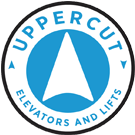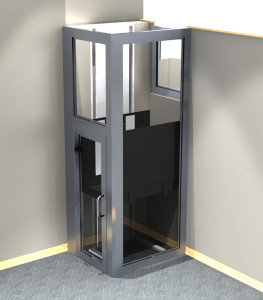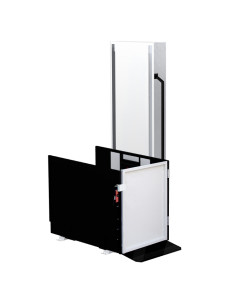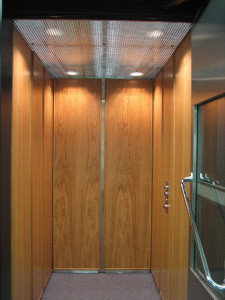Commercial accessibility lifts are governed by the B-355 code. If a lift is being installed in a public application make sure that your lift provider specifies that the product is B-355 code compliant. All public lifts are required to be registered with the Alberta Elevating Devices Amusement Rides Safety Association (AEDARSA). After a lift is registered, and the engineered stamped drawings are reviewed, AEDARSA then issues a Certificate of Construction. Now your lift provider may proceed with the installation of your elevating device. After the installation is complete AEDARSA will need to be booked for the initial inspection.
- Generate engineered drawings (lift provider)
- Registration of the lift with AEDARSA (lift provider)
- Review of the drawings (AEDARSA)
- Issue certificate of construction (AEDARSA)
- Installation (lift provider)
- Inspection (AEDARSA)
Now that we understand the procedure it is important to know some of the code restrictions as they pertain to vertical platform lifts.
Travel
Enclosed B355 devices are limited to a total travel of 7000mm or about 23 feet, while unenclosed lifts may travel up to 2500mm or 98.25 inches. It`s important to note that unenclosed platforms may not penetrate a floor. Travel is defined as the floor to floor measurement. This typically limits accessibility lifts to 3 story buildings.
Platform size
The platform or lift car is limited to 21 square feet. If the platform is configured in a straight through application a 34x 54 inch (12.75 square foot) car size is often acceptable. If the site dictates adjacent access or a 90 degree turn, we recommend a larger platform to make the turn easier for the wheelchair user.
Constant Pressure
This is one of the major restrictions of the code. Public accessibility lifts are required to operate using constant pressure. This means you must hold the button in order for the lift to operate.
Capacity
Depending on the manufacturer, your vertical platform lift may have a 550, 750, 800, or 1000lb capacity. Some manufacturers make lifts than can accommodate up to 1400lb, but it should be questioned as to why you want this higher capacity, as there are limitations on platform size. They may be designed to accommodate an individual user in a wheelchair, or allow for an attendant as well. Your lift provider should make sure the platform size and capacity meet your specific needs while still satisfying code.
Hoist-way Construction
This work would typically be completed by a third party (not the lift supplier). Each lift will have specific criteria regarding the contractual requirements but it can be broken down into Enclosed and Unenclosed applications. The following documents explain the contractual requirements for each elevating device.
VPL Enclosed requirements for public applications
VPL Unenclosed requirements for public applications
For more information on commercial accessibility lifts click here



